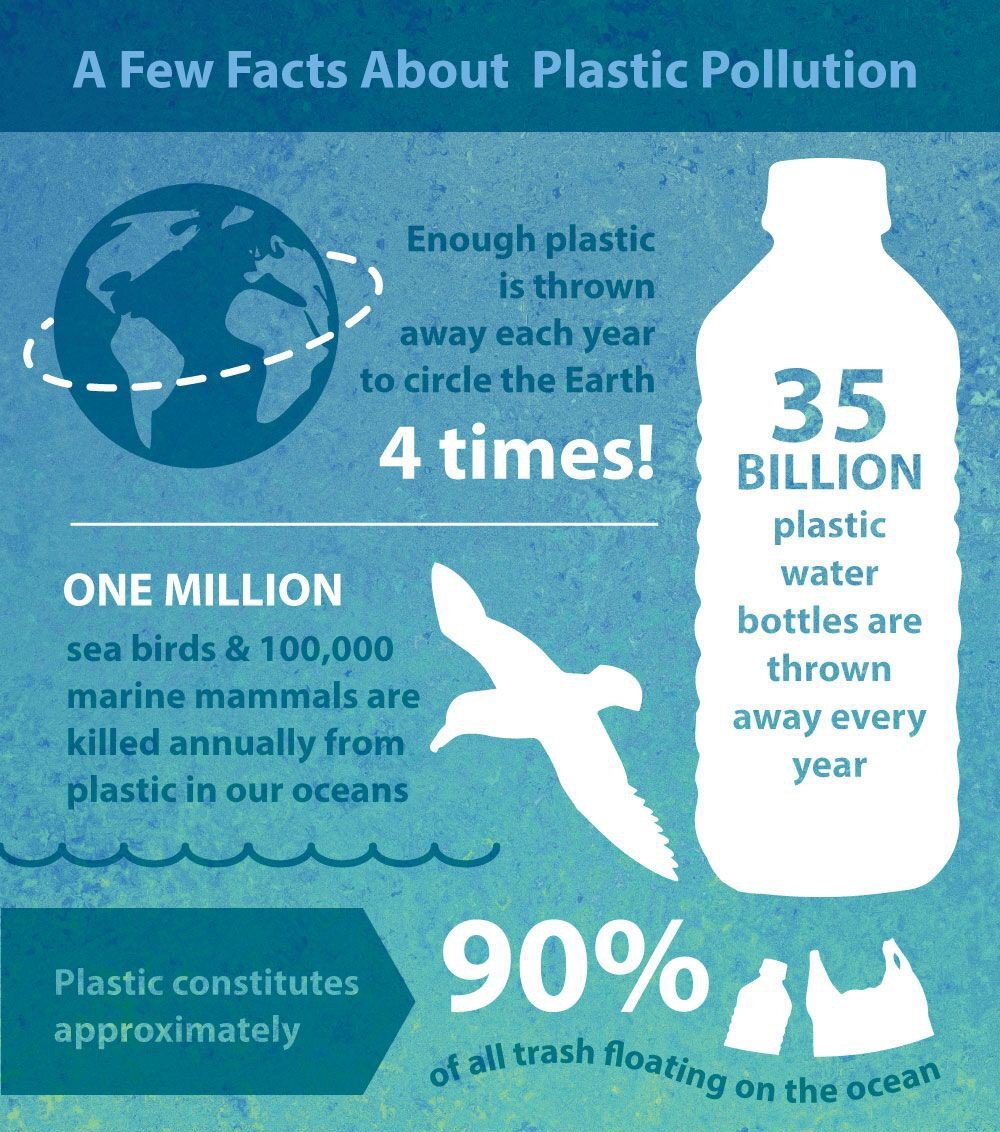The Facts About Plastics
We have a problem with plastics. This isn’t breaking news, but if we continue in the direction we are going we are going to have a much bigger problem. Here are the facts:
In our current economy, 380 million tons of plastic is produced per year (www.plasticoceans.org). And right now, less than 9% of all plastics get recycled. In fact, 50% of all plastic produced is for single-use purposes. And out of all that production, just 1% of all plastics produced come from a renewable resource. This is the reality of the world we live in, from where we understand it. And right now there's a reason plastic is used. However, as responsible business owners / producers we need to provide options to consumers that will reduce the use of plastics and drive up the recycling and re-use of plastic-based products. It is also the responsibility of producers to be transparent and educate consumers on the realities we are all facing. In fact, even here at Portco, 62% of our laminated structures utilize plastics that cannot be readily recyclable with our current infrastructure (although we are heartily working on this!).
380 million tons of plastic is produced per year (www.plasticoceans.org). And right now, less than 9% of all plastics get recycled. Image Courtesy: Plastics_Endemol Shine India
Plastic: Strengths and Weaknesses
Up until a plastic package is ripped open by a consumer, it is far and away the best packaging option available today for many products. First, plastic does a very good job of protecting the product. Plastic is light weight, making for lower cost logistics through the supply chain. It is also extremely durable. In fact, most plastics take hundreds of years to break down in the environment. And when those plastics do break down, they break down into methane which has 25 times the global warming potential vs. CO2. And until these plastics break down, if they are not disposed of properly, they clog up waterways and endanger wildlife. If we continue on the trend that we are on, by 2050 there will be more plastic in the ocean than fish.
The goal here is to start a conversation. There needs to be much stronger efforts at the manufacturing and design level to put into consumers hands plastic-based products that can easily feed into recycling, re-use and re-purposing. Look for our next installment in this series which we will explore the VERY powerful concept of the “Circular Economy” (graphic below). Our plan at Portco is to really focus on products that will meet the needs and demands of a circular economy.
The Current Journey of Plastics
Plastic comes from gas/oil. The design and production of the plastic packaging does not have an intentional end-of-life, or even a true way of reclaiming the material it is composed of. It's completely prioritized to protect the goods inside the package in the most economical way. However, designers do not take into consideration any useful “end of life” application. To make matters worse, there is not a truly uniform labeling to educate the consumer as to where to more responsibly dispose or recycle the product in the first place.
Furthermore there isn't the infrastructure, in most of the United States, to efficiently collect lightweight mixed plastics. To make matters worse, there is limited regulations and no uniformity, making things further confusing for consumers. Now, this leads to really limiting plastic packaging's ability to be economically recycled. This is where the “rubber ducky” drops out of the circular economy and where plastics begins to have a truly negative on the ecology of our planet.
IF PLASTICS WERE DESIGNED TO BE RENEWED, AND REGULATIONS WERE IN PLACE TO ENSURE THAT WE HAD MULTIPLE USEFUL LIFES FOR THE PLASTIC WE CREATE, WE WOULDN'T BE HAVING THIS CONVERSATION.
At present, the flow of the “circular economy” is quite non-circular indeed...and rather follows the path of the highlighted red line. Most plastic-based products end up in a landfill, the ocean or being incinerated, all of which have negative, environmental consequences. Image Courtesy: Impact Circularity Group
Follow the journey of the “rubber ducky” as it winds its way through the current, non-circular economy...while viewing the clear positivity that would be enjoyed if recycling of plastic materials were possible. Look for our next article installment, titled “Circular Economy: Beginning with the End in Mind,” which explores further the journey of rubber ducky and what we can do as manufacturers and consumers to change the path of the duck (positively).


